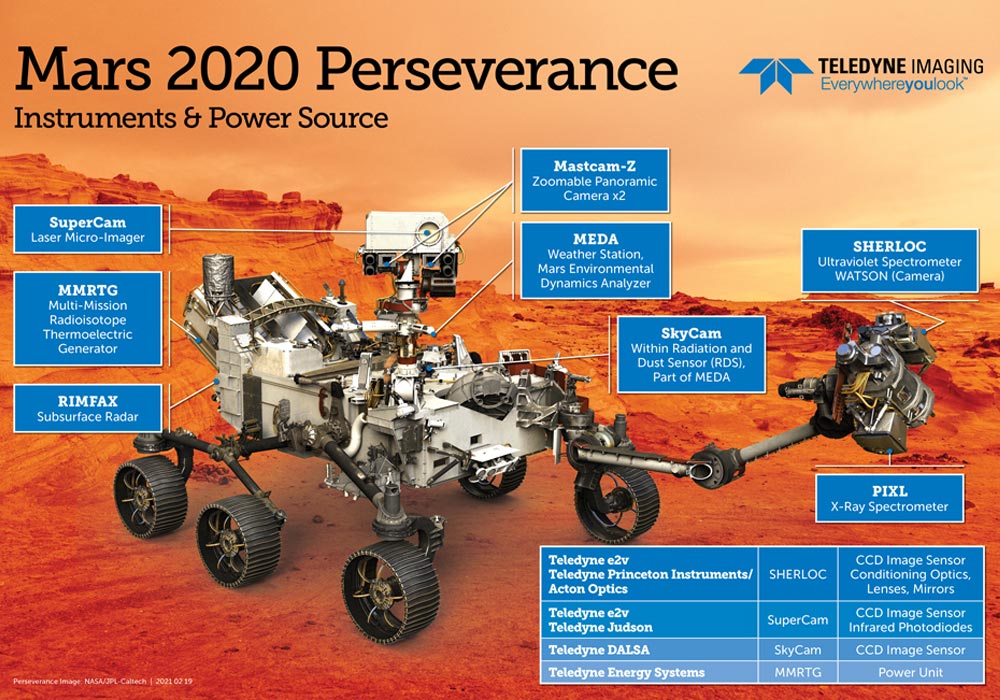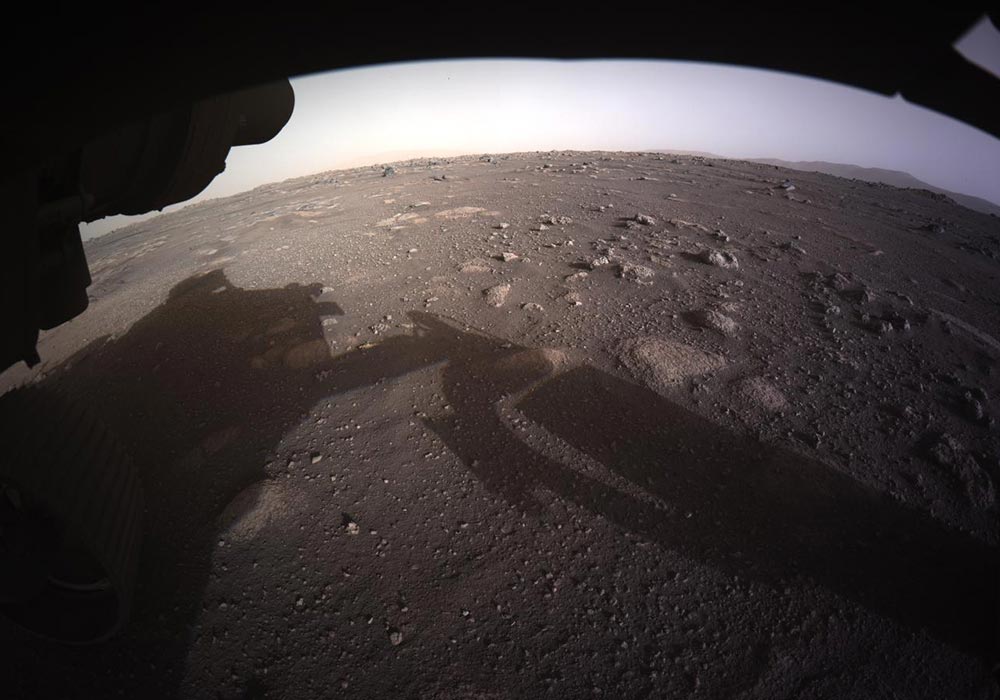TELEDYNE TECHNOLOGY IN ACTION
Looking for Signs of Past Microbial Life
The Mars 2020 mission is part of a long-term effort of robotic exploration of the Red Planet. The 2020 mission addresses high-priority science goals including questions about the potential for life on Mars. The mission will look for signs of past microbial life itself.
The mission also provides opportunities to gather knowledge and demonstrate technologies that address the challenges of future human expeditions to Mars. These include testing a method for producing oxygen from the Martian atmosphere, identifying other resources (such as subsurface water), improving landing techniques, and characterizing weather, dust, and other potential environmental conditions that could affect future astronauts living and working on Mars.

Instruments and power source provided by Teledyne for NASA's Perseverance Mars rover.
Credit: NASA/JPL-Caltech

Perseverance's First Full-Color Look at Mars.
Credit: NASA/JPL-Caltech
All of the electricity needed to operate the Perseverance Rover is provided by a power system called a Multi-Mission Radioisotope Thermoelectric Generator (MMRTG) developed by Teledyne Energy Systems.
The Teledyne Imaging Group, provided its CCD image sensors to drive two of the instruments, SuperCam and SHERLOC, on board NASA’s Mars Rover Perseverance, launched July 30th at 07:50 Eastern Time.
Teledyne’s sensors have proven their worth for the task, performing similar roles on Mars since 2012 on-board NASA’s Curiosity Rover.

This beautiful panoramic is one of the first images of Mars sent from the Perseverance Rover that arrived on the Red Planet on February 18, 2021. Pictured in this image is the Teledyne Energy Systems’ designed and built Multi-Mission Radioisotope Thermoelectric Generator (MMRTG) that will power the Rover and enable its mission to search for evidence of past microbial life on Mars. The MMRTG converts heat from the natural radioactive decay of plutonium-238 to electrical energy using thermoelectric modules. It weighs just under 100 pounds and produces a constant 110 watts of electricity that charge the Rover’s batteries. The excess heat produced by the system assists with maintaining the temperature of the Rover and the sensitive instruments in its science bay in the extreme temperatures on Mars, which average between negative 80-195 degrees Fahrenheit. Credit: NASA/JPL-Caltech
The SuperCam and SHERLOC instruments of Perseverance will advance this capability and be used to search for organic compounds and minerals, looking to see if they have been altered by watery environments, proving signs of past microbial life on the Red Planet.
In addition to SuperCam and SHERLOC, a Teledyne semiconductor foundry built the JPL-designed CCD image sensor that powers SkyCam, part of the Mars Environmental Dynamics Analyzer (MEDA), a meteorological suite for the Mars 2020 rover.
The key optical components for the SHERLOC UV spectrometer where produced by Teledyne which include lenses and mirrors in the Conditioning Optics Module, Lenses in the Context Imager Lens assembly and broadband mirrors in the spectrometer module, and also Teledyne supplied infrared photodiodes into the SuperCam instrument.
Teledyne has a long and proud tradition in supplying technology for Mars missions including the Mars Curiosity rover, where Teledyne Energy Systems also supplied the MMRTG, along with a number of business units also supplying to microelectronics relays, switches and image sensors.
Learn more:
Teledyne Imaging Remote Sensing Instruments Onboard NASA's Mars Rover Perseverance
